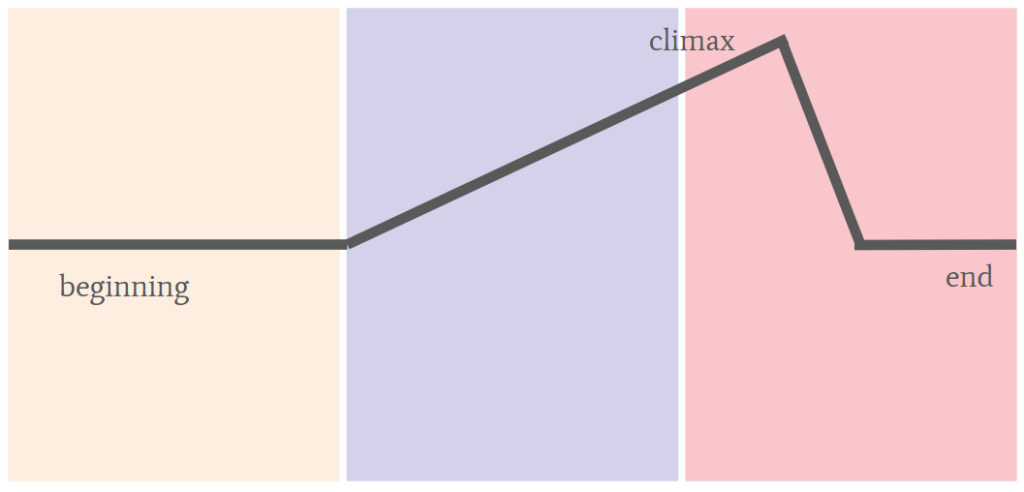- Importance Of Narrative
Narrative is often what drives the story. An interesting narrative is crucial to any story based game. Narrative doesn’t always have to be verbally or explained or written out for the player, but rather it can be told through the environment and the way characters or objects may react. Sometimes by leaving the narrative up to the reader to solve it helps bring them into the Gameworld, creating a high level of immersion that otherwise might not be told.
There are many typically narrative timelines and basics. Typically the timeline of a story will have whatever the climax is towards the end but before the resolution. A resolution can be important, it gives the players a sense of closure and sometimes meaning to the game. It is often-times the final aspect of any game. This isn’t required for the story telling though, a game without a resolution at the end can be unsatisfying and gut wrenching but also jarring. It may stick with the player more so then if you gave them a proper ending. This is the key component to any cliff hanger, whilst they can be frustrating they can also be better then any ending. It gives the player the power to determine for themselves what the ending is, if done correctly this can greatly help with immersion.

There are a few main aspects to any narrative that need to be considered.
- The concept
- The characters
- The enviroment
- The logic
Task:
- Play The Stanley Parable
This game did an exceptional job at creating an immersive and well thought out narrative. Every aspect from the environmental design to the characters helps to push the player into the story and become invested. The dull bleak environmental design really helps push an eerie and unsettling environment.